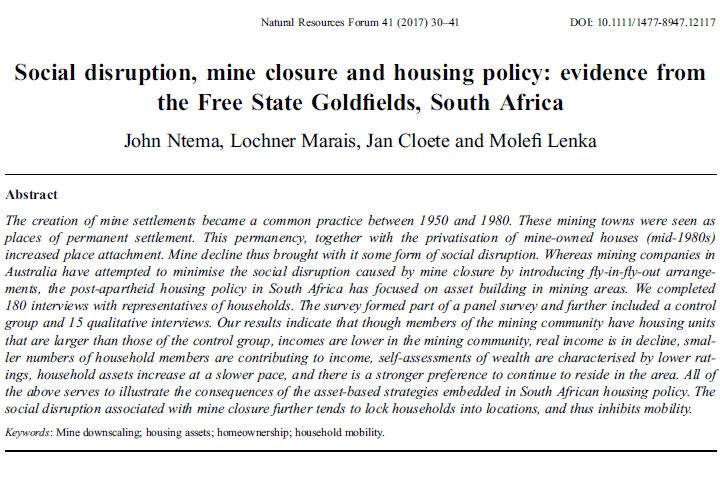Social disruption, mine closure and housing policy
Evidence from the Free State Goldfields, South Africa

05 January 2017
Wiley Online Library
English
Mining Towns Librarian, Lochner Marais
Journal article
Centre for Development Support, Municipal Capability & Partnership Programme
Africa
The creation of mine settlements became a common practice between 1950 and 1980. These mining towns were seen as places of permanent settlement. This permanency, together with the privatisation of mine-owned houses (mid-1980s) increased place attachment. Mine decline thus brought with it some form of social disruption. Whereas mining companies in Australia have attempted to minimise the social disruption caused by mine closure by introducing fly-in-fly-out arrangements, the post-apartheid housing policy in South Africa has focused on asset building in mining areas.
We completed 180 interviews with representatives of households. The survey formed part of a panel survey and further included a control group and 15 qualitative interviews. Our results indicate that though members of the mining community have housing units that are larger than those of the control group, incomes are lower in the mining community, real income is in decline, smaller numbers of household members are contributing to income, self-assessments of wealth are characterised by lower ratings, household assets increase at a slower pace, and there is a stronger preference to continue to reside in the area. All of the above serves to illustrate the consequences of the asset-based strategies embedded in South African housing policy. The social disruption associated with mine closure further tends to lock households into locations, and thus inhibits mobility.
This resource is part of the Mining Towns Collection kindly sponsored by the Municipal Capability and Partnership Programme. Abstract based on source.


Comments